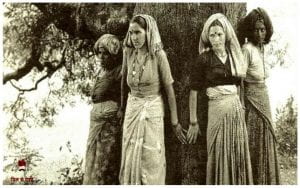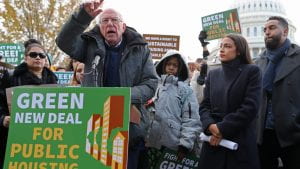The destruction, and colonization of land is the oppression of all people who live on it. The tie to nature that people have is a part of culture in the modern era. The best place to start understanding this concept is through an example. Sam Levin starts showing us this concept in At Standing Rock, women lead fight in face of Mace, arrests and strip searches, where he describes “the jail was packed with native women incarcerated for reasons other than the pipeline actions, including one who was pregnant and feared she was having a miscarriage and another who appeared to be severely ill.” There are two very important parts to this quote: what the protestors are fighting for, and the degree of punishment they were given. The native women were standing up against colonization of their land, and were punished by the government for protecting land that was rightfully theirs.
To better understand this, we can look at another example of punishment in, Speak Truth to Power, Wangari Maathai states “when she returned to the park to lead a rally on behalf of political prisoners, Maathai was hospitalised after pro-government thugs beat her and other women protesters. Following the incident, Moi’s ruling party parliamentarians threatened to mutilate her genitals in order to force Maathai to behave “like women should.” But Wangari Maathai was more determined than ever, and today continues her work for environmental protection, women’s rights, and democratic reform.” To understand the problem here, we again need to break the example into what the women are fighting for, versus what happened to them. Maathai worked to organize a rally, which was perfectly just, and was threatened to have her body deformed. Similar to the women at Standing Rock, this punishment was out of proportion, but because they were protecting nature, their own land and fighting for political justice, they are being targeted more violently with harsher punishments.
Finally, a final example to illustrate the problematic relationship between women’s suffering and environmental suffering, In The Chipko Movement, they talk about their history defending their land from the government. They state, “The original ’Chipko movement’ was started around 260 years back in the early part of the 18th century in Rajasthan by this community. A large group of them from 84 villages led by a lady called Amrita Devi laid down their lives in an effort to protect the trees from being felled on the orders of the Maharaja (King) of Jodhpur.” The form of government, in the form of the king, had attacked a community living on the land for almost three hundred years. This led to 84 deaths in an attempt to protect trees. I included an image of this protest below. This is an absurdly unbalanced way of punishing these people who rightfully own the land, and want to keep their piece of culture intact. This is a terrible problem. We as people who use the land everyday to nourish our society, and to help keep the peace, need to stand up to protect land and the people whose land was wrongfully, violently, taken from them. 


